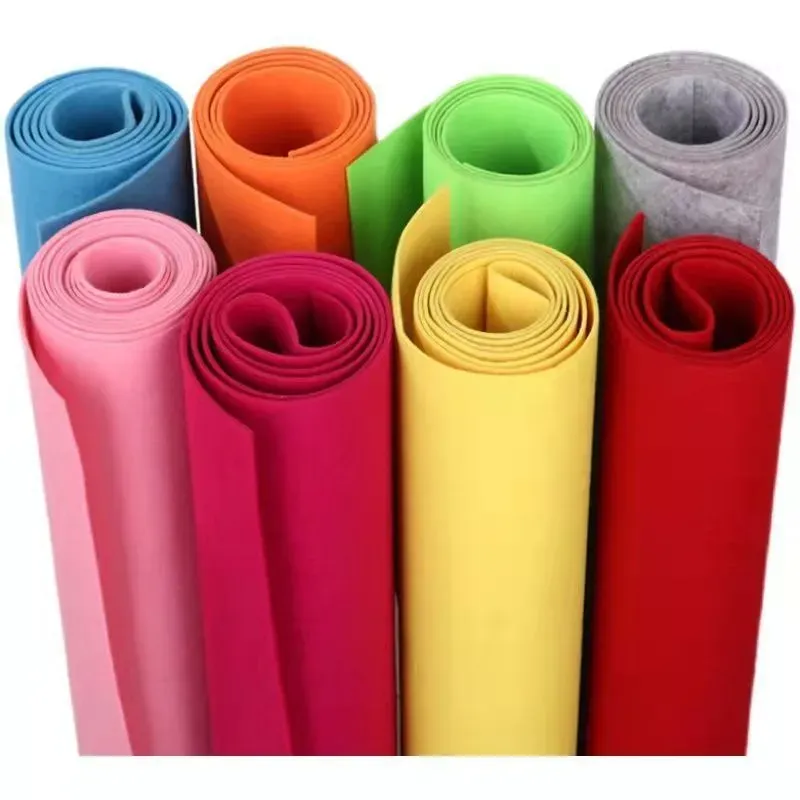Exploring the Versatility and Applications of Non-Woven Needle Felt Materials
Understanding Non-Woven Needle Felt Key Attributes and Applications
Non-woven needle felt is a versatile material that has gained substantial recognition across various industries due to its exceptional properties. Unlike traditional woven fabrics, non-woven needle felts are manufactured through a unique process that involves bonding fibers together without the use of weaving. This article delves into the characteristics, manufacturing process, and diverse applications of non-woven needle felt, highlighting its significance in modern manufacturing and daily life.
Characteristics of Non-Woven Needle Felt
One of the defining characteristics of non-woven needle felt is its composition. Typically made from synthetic fibers such as polyester, polypropylene, or a blend of natural and synthetic fibers, the material exhibits durability, resistance to wear, and excellent dimensional stability. The unique structure of needle felt involves entangling fibers through a mechanical process called needle-punching, which enhances the fabric's strength and durability. This specific process results in a dense, resilient material that can withstand considerable stress without losing its integrity.
Moreover, non-woven needle felt is known for its excellent filtration properties. The dense structure of the fabric acts as a barrier to dust, dirt, and other particles, making it an ideal choice for filtration applications. Additionally, needle felt has a soft hand feel, making it comfortable for various uses, including clothing and upholstery.
Manufacturing Process
The manufacturing of non-woven needle felt involves several steps. Initially, synthetic or natural fibers are layered and then subjected to a series of needle punches. Each needle penetrates the fiber layers, intertwining them to create a cohesive fabric. This process can be adjusted to produce different thicknesses and densities, catering to specific application needs. The fabric can also be treated with chemical finishes for additional properties such as water resistance, flame retardancy, or antimicrobial features.
Once the felt is formed, it can be further processed for a range of applications. Common finishing techniques include dyeing, coating, or laminating, enabling manufacturers to customize the final product to meet aesthetic and functional requirements.
non woven needle felt

Applications of Non-Woven Needle Felt
The applications of non-woven needle felt span a multitude of industries, showcasing its versatility. In the automotive sector, for example, non-woven needle felt is employed in sound insulation materials, providing effective noise reduction in vehicles. Additionally, it is used in interior upholstery and filter media for cabin air filters, contributing to enhanced passenger comfort and safety.
In the construction industry, non-woven needle felt serves as a protective layer in roofing and flooring systems. Its moisture-wicking properties help in preventing water damage and improving longevity. Similarly, the material is extensively used in geotextiles, where it aids in soil stabilization and erosion control.
The textile and fashion industry has also embraced non-woven needle felt for its soft texture and ability to hold shape. Designers incorporate it into garments, accessories, and home décor items, capitalizing on its aesthetic appeal and functional benefits.
Moreover, non-woven needle felt is crucial in the medical industry. It is utilized in the production of surgical masks, gowns, and other protective gear, offering both comfort and protection. The material’s breathability and ability to filter particles make it indispensable in maintaining hygiene standards.
Conclusion
In summary, non-woven needle felt is a powerful material with a wide array of applications across numerous industries. Its unique manufacturing process imparts strength, durability, and specialized attributes that cater to specific needs ranging from automotive and construction to textiles and medical applications. As industries continue to innovate, the relevance and utility of non-woven needle felt are set to grow, making it an essential component of modern manufacturing and design. Whether it’s enhancing vehicle interiors, protecting structures, or contributing to health and safety, non-woven needle felt undeniably plays a vital role in enhancing functionality and aesthetics in everyday products.
-
What Makes Felt a Great Choice?NewsNov.19,2024
-
Total Mixed Ration (TMR) Feed for CattleNewsNov.19,2024
-
The Ultimate Guide for Felt Polishing WheelsNewsNov.19,2024
-
Industrial Felt for Various ApplicationsNewsNov.19,2024
-
Felt Makeup Bags and Inserts BagsNewsNov.19,2024
-
Choosing the Right Hotel TowelsNewsNov.19,2024
-
Your Go-To Guide For Affordable Wholesale Wool FeltsNewsOct.31,2024







